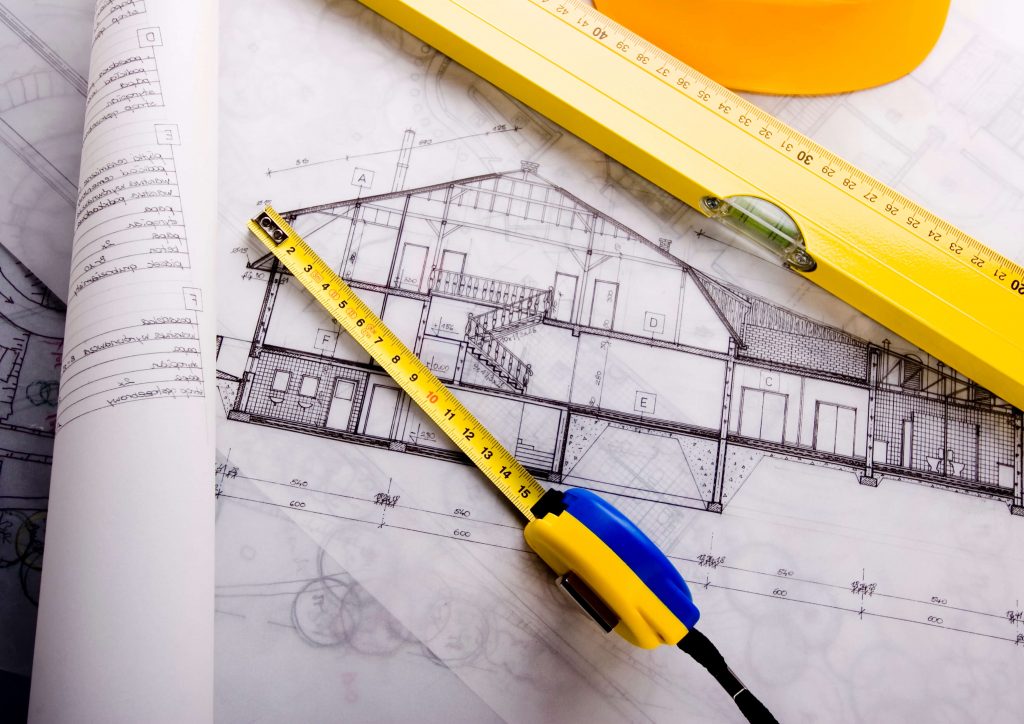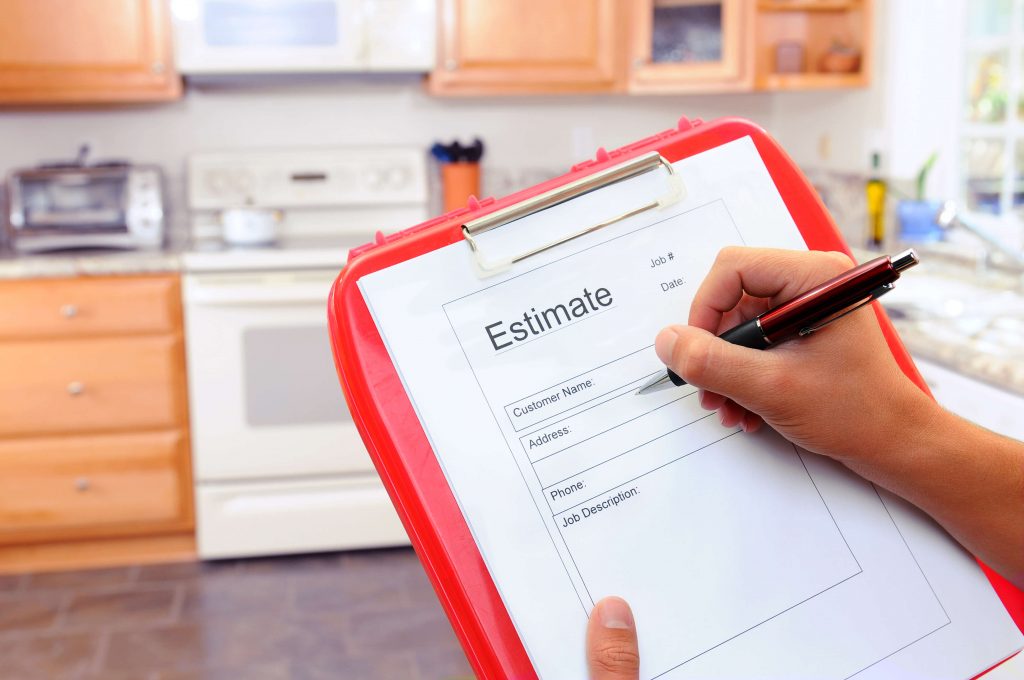How to Hire a General Contractor (And Save a Ton of Money in the Process!)

Anytime we have a significant project like a bath and kitchen remodel and sometimes even painting, we need to hire professionals. But how do you do that exactly? Should be no biggie- they’re all basically the same, right? If only that were true…
Word to the wise: there’s a better way to go about it than just picking one from the bunch and crossing your fingers! Of course, the simpler your project, the less you need to worry about it, but if your project is more complex (anything that involves mechanical, electrical, plumbing, or structural changes), then it’s STRONGLY suggested that you use these guidelines when hiring someone.
SIDE NOTE: The majority of agencies to which we will be referring are US agencies, so if you are in another country, you need to make sure you check in with your governing municipality or contractor’s licensing agency for information.
How Do You Find a Contractor?
Referrals
The number one way to find a pro is through word of mouth- if someone has had a good experience, referrals are natural and offer unique and honest insight into a particular contractor’s work ethic.
Online Professional Lists
You can go to online resources that offer lists of approved professionals, like the exclusive Lisa’s List!
Material Vendors
Another great resource is speaking with the vendor directly- they accrue many names of professionals who could complete various types of projects.
 Red Flags!
Red Flags!
Of course, they can’t ALL be dreamboats. While conducting your initial search, you’ll want to keep a sharp eye out for these MAJOR warning signs. Your hiring process should be cut short if you come across any of the following:
-
-
-
No insurance or license
-
Unable to provide references
-
-
Bad reviews
-
They have changed business names several times
-
Their bid is way too high or way too low
-
They ask for cash
-
They ask for full payment upfront
-
They don’t sign a contract
-
They tell you that permits aren’t necessary
-
What Do I Need to Ask For?
You need to have the contractor provide you with the following items:
- A copy of their license
- A copy of their worker’s compensation insurance (if they have employees)
- A copy of their liability insurance
- In the US, your municipality may require an EPA (Environmental Protection Agency) certification
- W-9
- List of references*
*By the way, it’s a good idea to have a few prepared questions to ask them. Let me help get you started:
Interview Questions for References
- What about the work that they did that made you satisfied and want to be a reference?
- Did they deliver the project on time, and/or was he over budget? If so, why?
- If/When you disagreed, how did that get resolved?
- How quickly did they resolve the punch list?
- Would you hire them again, or would you look for someone else? If so, why?
Be sure to document all the answers in case you need to refer back to them! Of course, references aren’t the only ones you’ll need answers from…
You may have already discovered this, but there really isn’t a lot of good information out there as to what to ask a contractor, and it’s absolutely critical to get the answers you’ll need to feel comfortable with them working on your project. Don’t feel bad if you’re feeling lost- these aren’t things the average person would ever know! You’re here so you can lean on our experience, right? And we’re about to show up for you big time! Here you go:
Contractor Interview Questionnaire
- What is your availability?
- Do you have any examples of similar projects?
- Are you ok with going through a bidding process?
- Are you comfortable with mutually established benchmarks for payment?
- I’ll be working with a benchmarked payment schedule. Are you familiar with that?
- Do you have any outstanding liens to any of the work you’ve done and/or impediments against your license? (You should still verify this on your own.)
- I’ll require an insurance indemnification rider; are you familiar with that? (You want their insurance to cover everyone who is employed by them.)
- Do you have any questions about the scope of work or the critical path schedule?
- Who will be on the job site, yourself or the job foreman, and when will I meet them? (If there are multiple trades involved)
- I would like to see an in-process job site. Can you provide me with an address and a date within the next ten days?
- I’ll be buying all the finish materials, and I will need you to provide all of the rough materials. Are you familiar with that? (Ex. drywall, support posts, pipes, etc.)
- I need you to pull all the necessary permits. Are you familiar with that?
- Will you be hiring any finish subcontractors, and if so, I would like the first option of refusal on their work. Are you familiar with that? (A contractor is a company hired by you directly, whereas a subcontractor is a professional who provides services on a project that was hired by someone other than the homeowner, usually the contractor.)
- Are you comfortable signing a lien waiver? **
**Lien Waiver
 We want to talk more about this one because it’s a biggie.
We want to talk more about this one because it’s a biggie.
Contractors typically work in one of two ways. They either have an entire crew that works underneath them and are on his payroll. OR, he will be responsible for completing the basic rough framing and perhaps another specialty like plumbing, but for the rest, he will hire subcontractors. Remember- you need to make it clear to him in an interview that if he is the type who doesn’t do it all in-house, you’ll have to approve any subcontractor.
Because you will be paying the subcontractor, they need to sign a lien waiver to you at the end of the project (this is in addition to the one from the contractor.) It says that all the materials that they provided were COMPLETELY PAID FOR. This is a non-negotiable! Trust us, things can get pretty dicey, so make sure you’ve got it.
 Narrowing it Down
Narrowing it Down
After your interviews, you are probably going to narrow it down to the ones who made you the most comfortable when answering your questions and, of course, met all of your requirements.
It’s not a bad idea to have a second meeting to review the details of the scope of work and the schedule because, at this point, you’re ready to ask them to bid on the project. You’re going to give them a delivery date that you want the bid to come back to you (minimum of three-day bid turnaround, so an expectation of 5-7 business days is reasonable). If there is a massive difference in bids between contractors, you will want to discuss this with all of them.
Onboarding
Once you’ve made your selection, it’s time for the onboarding process. It’s at this stage where he will provide all the documents and review with you what’s called your contractor agreement. A contractor’s agreement is basically the terms of work that they will be signing off on.
 Scope of Work Review
Scope of Work Review
After you’ve made your material selections and they’ve come back with pricing, it’s time to once again review the scope of work. Your scope of work will include every finalized piece of material, so there won’t be any misunderstandings, and your priorities are crystal clear. Expect to see line items for rough materials, labor, and project management, but you need to really dig into their pricing to verify who is buying and doing what. Here’s why:
Let’s say the bid total included costs for natural stone tile; however, your plan is to purchase the tile separately, so the bid didn’t need to have that additional material cost and should be adjusted.
 Establishing a Payment Schedule
Establishing a Payment Schedule
This applies to labor only, and you’ll work with contractors to establish a mutually agreed-upon set of payment benchmarks based on work completed/inspections. Setting up and following through with a payment plan not only can keep your project from going off track, but it can also help toward completing the project on time, avoiding unnecessary disputes, and even staying within the overall budget.
There are several varieties of contracts that will inform your payment schedule. Let’s take a peek at some of the most common types:
Deposit and Final Payment
Most common in smaller projects, an initial deposit followed by a final payment may be all that’s necessary to keep everyone satisfied. The deposit may cover permits, materials, and labor, with the final payment wrapping up any other expenses.
Progress Payments
This payment scheduling format is most common in mid-sized or large projects. Under this payment schedule type, payments will be made at specific checkpoints throughout the project.
Checkpoint types include:
1. Time-based Payments
With time-based payments, the payment schedule divides the contract total into equally distributed payments. Typically, monthly payments are established with set due dates. Under this contract type, payment amounts and intervals are made very clear but may require adjustments if change orders and/or delays occur. This payment schedule works best for really large projects or new builds, as they can take well over a year to complete.
2. Milestone-based Payments
Milestone-based payments outline that a payment is due when specific phases of the project are completed. For example, an amount could be due when the contractor finishes the final clean-up of the property or when the flooring installation wraps up. This payment schedule works really well with more extensive renovation projects that can be broken down into a series of smaller projects. This type of payment schedule is best for renovations due to the set timeframe, and the payments made at certain milestones will help keep the project moving along.
3. Completion-based Payments
When a contract uses a completion-based payment schedule, payments are due at regular intervals based on the progress of the project. For instance, payments may be scheduled at every 10% interval of the project’s completion. Keep in mind, however, that determining a project’s completion percentage can be a real challenge. This payment type will only work well on projects that have clear, itemized budgets or schedules of values.
 PRO TIP: Hold a percentage back for the punch list. What’s a punch list? When your project is 85-95% complete, you will walk through the space and inspect EVERYTHING for appearance and functionality. As you do, you’ll make notes, take photographs, and use blue painter’s tape to mark any flaws or issues that need to be fixed. This list of to-dos is called a punch list, and be warned now- it takes an entire day to create! Take a look at this example punch list to see what we mean! Check out the Example Punch List in The Library!
PRO TIP: Hold a percentage back for the punch list. What’s a punch list? When your project is 85-95% complete, you will walk through the space and inspect EVERYTHING for appearance and functionality. As you do, you’ll make notes, take photographs, and use blue painter’s tape to mark any flaws or issues that need to be fixed. This list of to-dos is called a punch list, and be warned now- it takes an entire day to create! Take a look at this example punch list to see what we mean! Check out the Example Punch List in The Library!
Think of it as a scorecard, and if your contract doesn’t get an “A,” he doesn’t get paid! Our recommendation is to do the punch list on your own and then communicate it to your contractor once it is complete.
How ya feeling? Confident? Good! You should be! By straightforwardly approaching a general contractor with your requirements, you position yourself as an informed consumer, and believe us, your position is much stronger when you set this precedent in the beginning. With all this inside information you now have in your back pocket, you are miles ahead of the average homeowner! Now go get ’em, Tiger! 🐯
7 thoughts on this post
Leave a Reply
You must be logged in to post a comment.



This is super helpful. I almost think that I could benefit from not only a DezignClub but a BuildingClub because I have some many questions on managing the whole project. I need time to make decisions and contractors seem to forget that! etc.
Haha! It’s soooo true Epic! I just saw this not prepping for the masterclass this weekend, and I feel like I want to do a special Q&A JUST on construction, what do you think?
I love the idea of a Q and A on construction. We’re in the process of meeting with builders right now so this was very helpful.
Definitely agree that a Q&A on construction would be AMAZING! (Maybe you’ve already done it since this post is from a few months ago??)